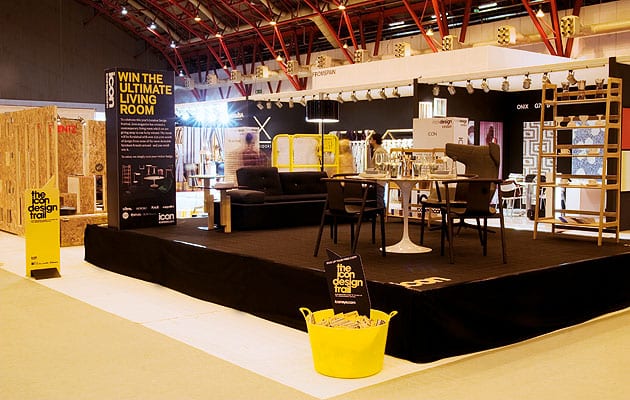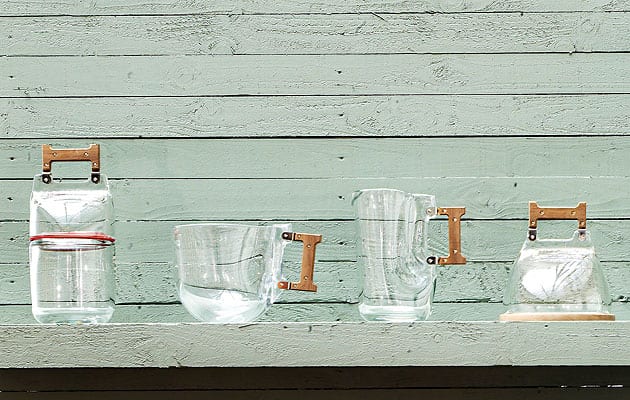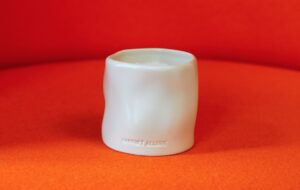|
The London Design festival was back on top form in 2009. After a tumultuous year, we had expected a subdued affair. Sure enough, there was less glitz, but no shortage of interesting new work – and we detected a very welcome trend towards the solid, the handsome and the well-made.
The Dock
Tom Dixon took a risk setting up shop at a venue a bus ride away from a Tube station in deepest west London but despite the detour it was well-visited. The Dock took over three canalside buildings in Kensal Rise. In the Wharf Building, Tom Dixon set up a permanent showroom of his collection (01) and was showing off the new three-legged Offcut stool (02) and a bar stool in the Slab series.
At the Canal Building Dixon invited a host of international brands and designers to exhibit. Here, London-based Ed Carpenter and André Klauser’s start-up Very Good and Proper showed its 1940s school chair-inspired tubular steel and wood Canteen Utility Chair (03). It comes in a brilliant choice of bright, disco colours.
The White Building provided space for younger designers to show their work. Notable exhibits came from Philippe Malouin, who showed a series of products that clip onto standard metal rails including a small table top and light (04) and Simon Hasan showed his new collection of pieces that revive traditional craft techniques (05).
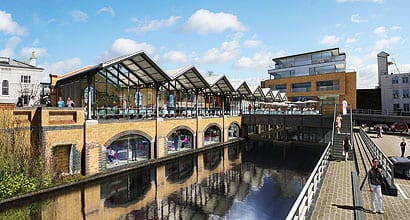
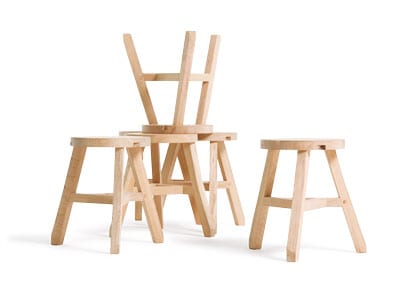
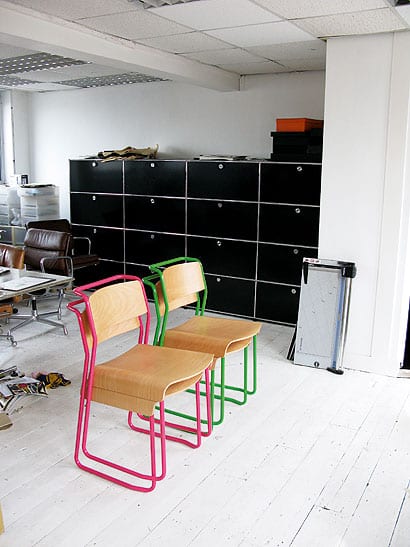
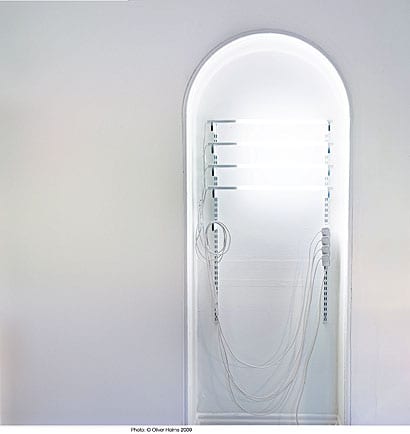
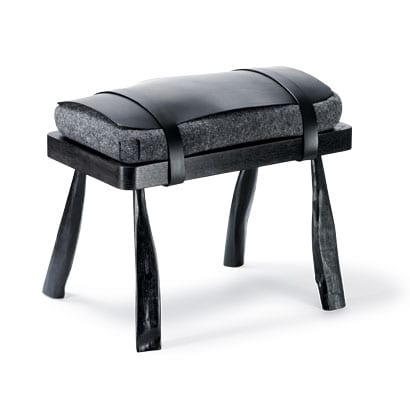
Benjamin Hubert
Benjamin Hubert’s contribution to 100% Design was impressive to say the least (06). His display A Year In The Making featured ten products designed in the past year, all of which are now in production with leading manufacturers like Ercol and De la Espada. “I just worked really hard,” said Hubert when asked how he managed to do it.
It all looks vaguely familiar, but still original enough to have its own integrity. Labware for Authentics is our favourite, a mouthblown pendant light that looks like a bottle in glossy opal white glass. It’s finished off with a hand-turned stopper and a sturdy cord.
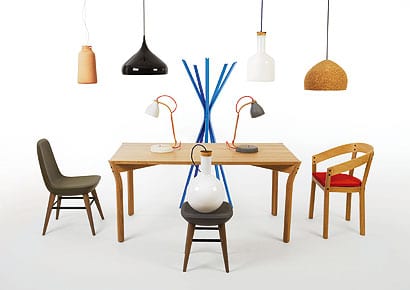
image: Richard Boll
Committee
The Deptford-based design duo usually spends its time fishing for consumer tat in flea markets. But in the last few months Committee has been hunting down the best coffee, ice cream and cakes in London, so it could open a cafe-cum-gallery called Gallop (07) for the duration of the festival. Meticulously tiled with an odd mix of leftovers from “practically every tile manufacturer in the country”, the interior has the same charm as Committee’s products. To add a bit of weight, they invited artist Barry Sykes to produce work for the space: greeting visitors is a sign reading “Relaunch Announcement Sculpture”. The cafe also includes a one-seat cinema, and the studio’s full collection of Plastic Relics – a series of intriguing plastic ornaments from an imaginary, post-apocalyptic era – are on display.
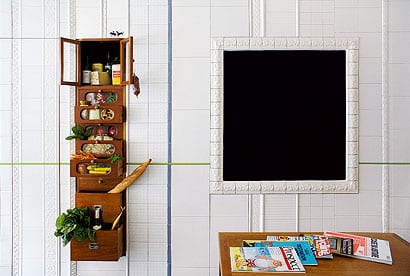
Max Lamb
Designer Max Lamb continues to slice seats into boulders and cut stones in half to make coffee tables. The 19 pieces in the China Granite Project (08) continue the designer’s Quarry Series for the New York-based Johnson Trading Gallery. The first set of works in the series used New York bluestone, which split open to reveal a disappointingly drab range of colours. Fortunately this time Lamb has the material on his side – Chinese granite is more dramatic. Polished up, its jet-black surfaces resemble a thin layer of oil.
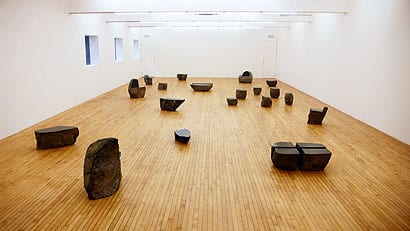
Three Yet One
For the second year running Parallel Projects put on one of the festival’s most interesting exhibitions, presenting new names and interesting new products. This year’s Three Yet One exhibition in an empty building in the Brompton Design District featured work by recent graduates like Debbie Wijskamp’s totem-like paper pulp sideboards (12), Luka Stepan’s clever foldaway hat stand in beech wood (11), Oscar Diaz’s clip-on light (09) and the quirky bandage lights by Zaven (10). As well as presenting the actual product, Parallel Projects also invited a photographer and writer to interpret the pieces in a beautiful catalogue.
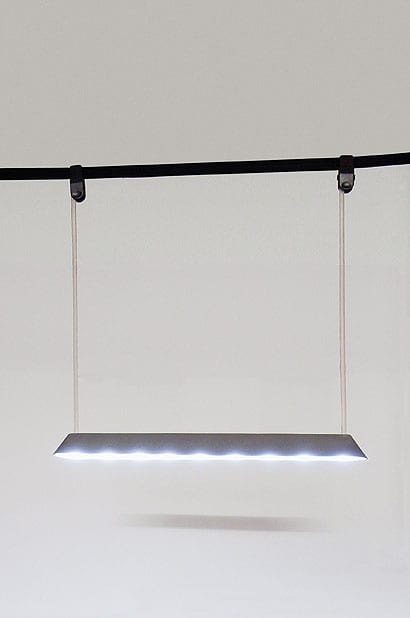
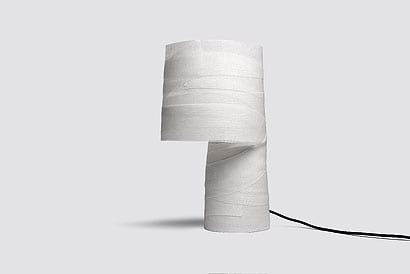
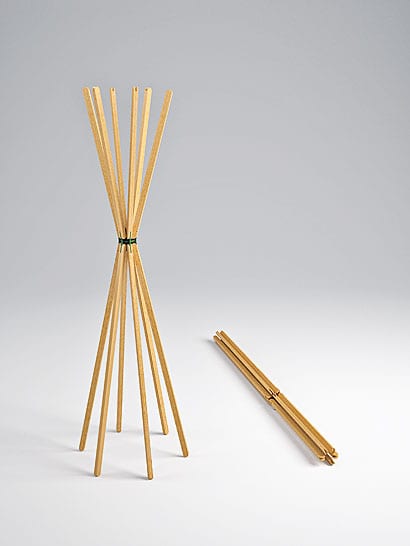
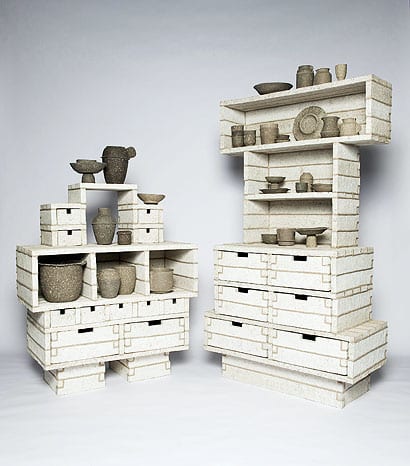
The Tournament
It’s good to see the London Design Festival make a grand public gesture for the first time: a man-sized chessboard by Jaime Hayon at Trafalgar Square (13). The beautiful ceramic pieces, crafted in Italy, were decorated with Hayon’s trademark expressive drawings. The pieces were attached to castors and manoeuvred by uniformed assistants acting on the commands of the public on one side and chess champions on the other. The only downside was that the spectacle finished early leaving visitors to London during the second LDF weekend without any public entertainment.
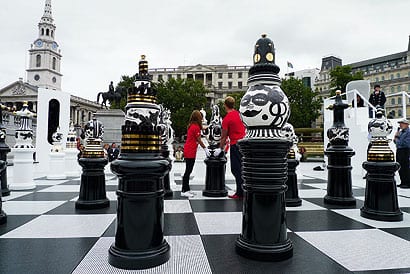
Daniel And Emma
It’s interesting that the more digital we get the keener we are on having beautifully designed office accessories around us. Australia-based Daniel and Emma, who showed at 100% Design for the first time, make rulers, rubber band balls and pencil cases into Memphis-esque desktop sculptures (14). The pieces are based on geometric shapes that make them look like small monuments for your pencil and paper clips to hide in. The duo was showing in London for the first time.
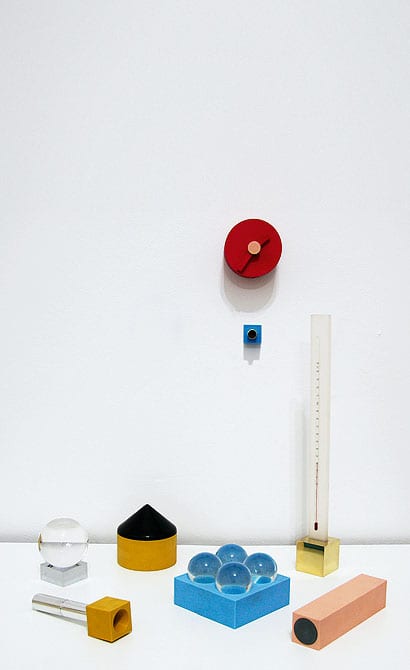
Oscar Narud
Furniture without nuts and bolts kept popping up during the festival. Oscar Narud showed a collection of wooden tables and chairs called Keel in the Norwegian Prototypes exhibition on Brick Lane. As the name suggests the collection was inspired by the drop-down keel on sailing boats. All the pieces, including this chair/stool (15), are held together with pegs, creating a sturdy seat.
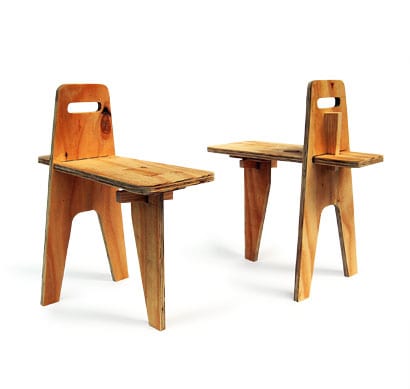
Corncraft
As soon as you entered Gallery Fumi’s breakout space on the fourth floor at 16 Hoxton Square you couldn’t just see grain, you could smell it too (16). Raw-Edges’ Wheat Table is like a wheat field for your living room. Nacho Carbonell’s Crop cabinets are the result of a laborious process where corn, barley, wheat and oats were crushed together to create a resin attached to a steel rod frame and then left to dry, creating these fragile-looking pieces. Rowan Mersh added the finishing touches to the space by hanging different grains from the ceiling.
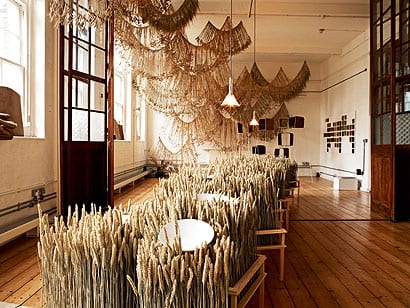
image: Tom Mannion
Jair Straschnow
Grassworks by Jair Straschnow (17) at the Aram Gallery was a surprise treasure from an almost unknown Amsterdam-based designer. The Israeli-Austrian makes flatpacked bamboo furniture with no bolts, screws or glue. Instead, the pieces are assembled using a series of elegant variations on the dovetail joint, and hold together with the help of the tension of their curved surfaces. This use of tension works in other sophisticated ways – for instance, his table is steady on an unlevel floor. Here’s a craftsman who has really thought it through.
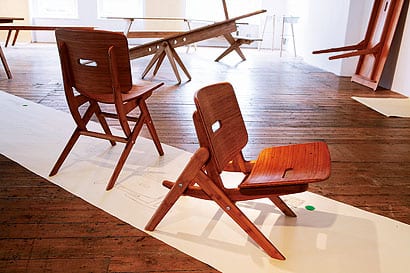
image: Shira Klasmer
Dick van Hoff
Gallery Libby Sellers set up shop in an old parking garage in Brompton Cross for this year’s festival. It was exhibiting Dutch designer Dick van Hoff and a new series of rustic glass vessels that he produced for Royal Leerdam (18). Van Hoff has previously stayed away from working in glass as he felt unsure about relinquishing control to the glassblower, but in this series he added what looked like wooden saw handles that he has used to extrude the final shape of the vessel. The result is rough but very appealing.
|

